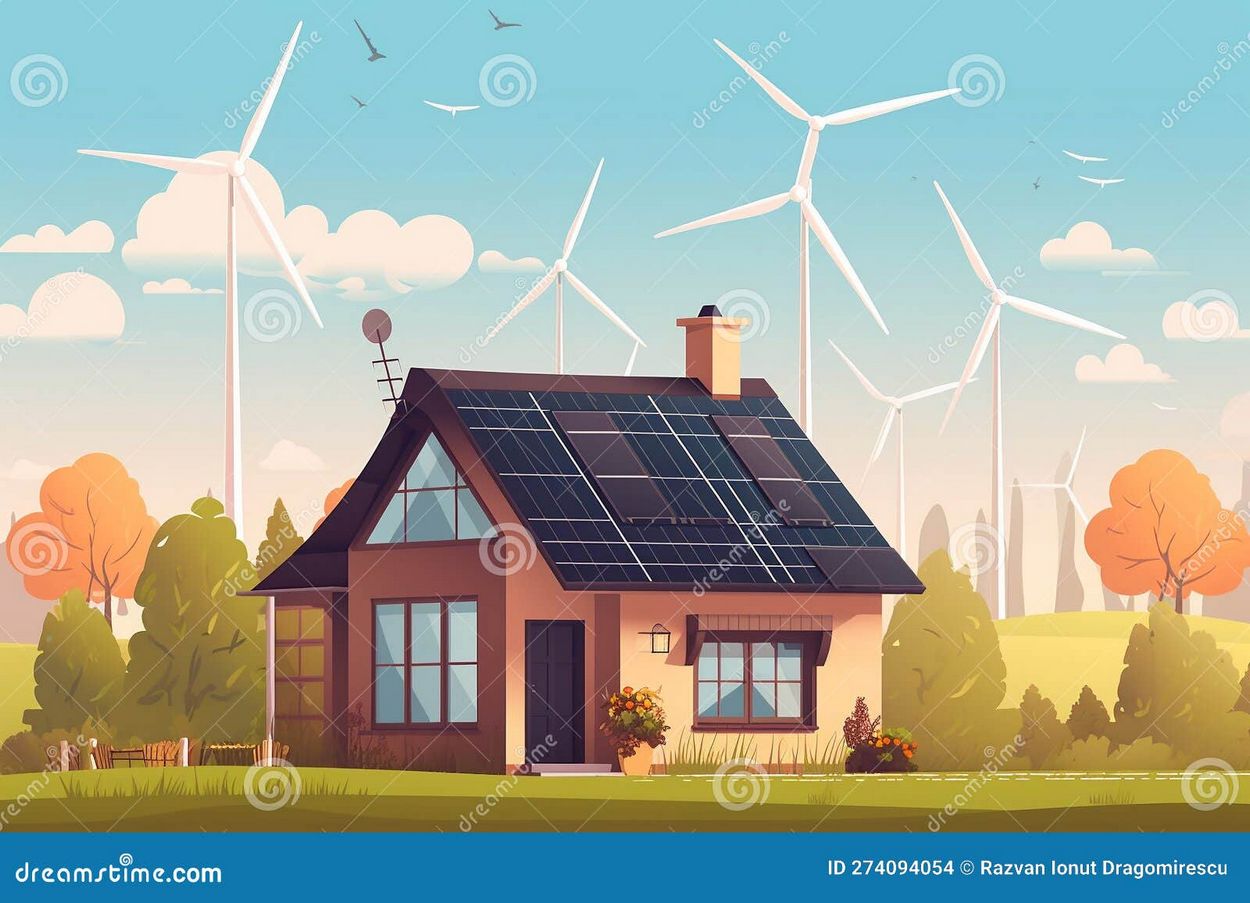Start with Energy Performance
Making the home energy-efficient prior to mounting a renewable resource system will certainly conserve money on electricity bills. Energy-efficiency renovations can preserve power and protect against heat or trendy air from leaving. House owners can obtain home power assessments and set up proper insulation, air securing, and ENERGY CELEBRITY- qualified home windows, cooling and heating equipment, kitchen area appliances, and lights systems. Smart water use, readily available daytime, proper landscaping, and indigenous vegetation can additionally enhance home performance.
Integrate Renewable Energy
When home energy-efficiency improvements have actually been made, house owners are best placed to take into consideration options for mounting a renewable energy system.
Geothermal Heat Pumps
Geothermal heat pumps, likewise known as ground source or water source heatpump, transfer heat into and out of the home, using the ground as both a heat resource and a warmth sink. These pumps can achieve performances 2 to 3 times more than frequently utilized air source heat pumps (ASHPs), since they count on the reasonably consistent ground temperature levels to transfer heat to or from a home. Across much of the USA, the temperature of the upper 10 feet of the ground stays in between 45deg; deg; F and 75 deg; F, and typically in between simply 50deg; deg; F and 60 deg; F.follow the link renewable-energy-advisors.com At our site By contrast, air temperatures can vary, throughout a year, from listed below 0deg; deg; F to over 100 deg; F. Geothermal heat pumps are resilient and resilient, and particularly geared up systems can likewise supply warm water throughout the summer. While buying and installing a geothermal heatpump sets you back greater than installing an ASHP system with similar capacity, the extra expenses can be recovered with power financial savings in 10 to 15 years compared with ASHPs.
Solar Water Home Heating
Solar water heaters utilize sunshine to heat water for the home. Solar water heater utilize insulated storage tanks and solar batteries to catch and preserve warmth from the sunlight, and heat distributing water. Solar water heaters require a back-up system, such as traditional warm water heating systems, when there is insufficient sunshine.
Solar Energy Equipments
Solar solar (PV) systems convert sunshine right into power. Solar power can generate all or several of a homes power needs, relying on the variety of photovoltaic panels used, and can heat up water too. With sufficient sunlight, PV systems can harness power in hot and cold climates. The fundamental building block of a PV system is the solar cell. Several solar batteries create components called photovoltaic panels that range in output from 10 to 400 watts. Panels are designed to survive tornado and hail damages and are immune to destruction from ultraviolet rays. They are extremely reputable and need little upkeep. Panels are normally organized with each other on a structure rooftop or at ground degree in a shelf to develop a PV array. The variety can be placed at a repaired angle or on a tracking tool that complies with the sunlight to maximize sunlight capture.
Wind Power Systems
Small household wind energy systems can generate all or some of a homes electrical power demands(if sufficient land area and ordinary wind speeds are available) and can be incorporated with solar and battery storage to supply emergency backup power. Wind turbines use the motion of the wind to transform a shaft connected to a generator, that makes power. The dimension of the wind turbine and the speed of the wind figure out just how much electrical energy it will certainly make. Normal household wind energy systems have power ratings ranging from 5 to 30 kilowatts. To be an appropriate candidate for a wind system, a house owner ought to have at least one acre of land and stay in an area that has a typical yearly wind rate of a minimum of 10 miles per hour. The generator tower height must be picked based on the elevation of nearby wind blockages, such as structures or plants, and are usually 60 to 140 feet high.
Approximated Costs
Federal and state incentives can substantially minimize the in advance prices of mounting a renewable resource system. The Database of State Rewards for Renewables Efficiency can help homeowners discover incentives near them. Plus, renewable energy systems can spend for themselves with time. Grid-connected solar and wind systems are especially economical due to the fact that excess power is sent back to the power grid and can make house owners direct discounts or credits from local energy companies.
- Solar PV systems cost concerning $3 per watt set up. A 7,000 watt (7 kilowatt) system for that reason sets you back about $21,000 to set up. Such a system would certainly offer 20 to 35 kilowatt-hours of electrical power per day, relying on climate, and might meet a lot of a familys
- need. Solar warm water systems can satisfy 50% of the hot water requires for a household of 4 and normally expense between $5,000 and $7,000 to install.
- Small wind power systems set you back approximately $5 per 120 kilowatts to install. Purchasing and setting up a system can vary from $10,000 to $70,000, depending upon local zoning, permitting, and energy interconnection costs.
Selling Power
Numerous house owners can offer any type of excess power their solar and wind systems produce back to their utility service providers and, therefore, settle their renewable resource investments quicker. The majority of states have actually developed web metering policies for consumers that create excess electricity through solar, wind, or other systems and feed it into the grid. In internet metering, a bi-directional meter documents both the power the home draws from the grid and the excess electricity the property owners system feeds back into the grid.
